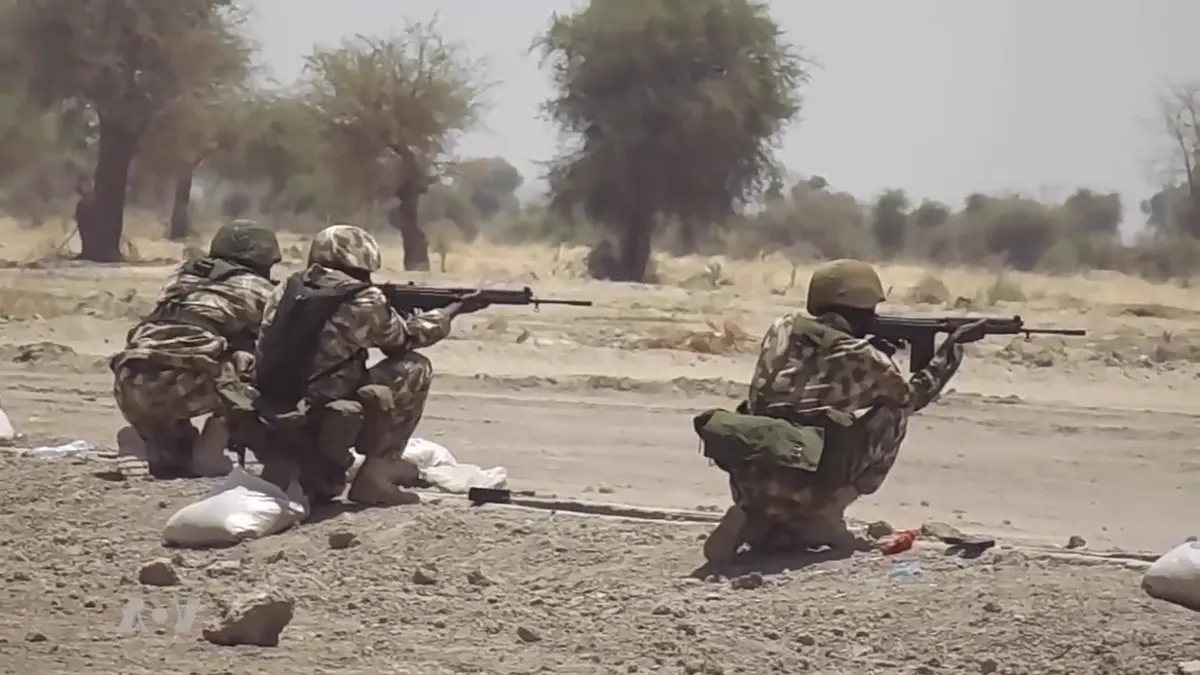“(Abuja/Gusau — August 12, 2025) – The Nigerian Armed Forces have said they have carried out integrated air-ground operations in Makkakari forest in Zamfara State, resulting in the killing of “several” bandits and the destruction of several camps. Military sources have indicated that the operation was part of a larger strategy to disrupt armed groups before they launch large-scale attacks on rural communities.
Location and operational context
The attacks were carried out on August 10 under Operation Fasan Yamma*, a joint security effort covering the bandit-infested northwestern states. Intelligence, surveillance and reconnaissance (ISR) detected several hundred armed fighters congregating in Makkakari – part of the Gando forest belt. The operation was followed by air strikes in *Bukkuyum Local Government Area* – and then ground forces was cleared.
Local reports indicate that the operation was targeting known staging areas for motorcycle-mounted raiding parties, with the aim of conducting follow-up patrols to prevent escapes. Routes.
- The Nigerian Air Force (NAF) uses the A-29 Super Tucano aircraft in counter-insurgency (COIN) operations, particularly against groups such as Boko Haram and ISIS West Africa. The Super Tucano is a light attack and counter-insurgency aircraft known for its precision strike capabilities and intelligence, surveillance and reconnaissance (ISR) capabilities. It is used to manage internal conflicts and monitor the country. The NAF’s efforts to protect its borders and exclusive economic zone are a key component. (USAF)
Official Statements and Casualty Estimates
Air Force Spokesperson Air Commodore Ehiman Ejodme confirmed the engagement but used the term “score” rather than release specific casualty figures. Independent Nigerian media outlets, citing unnamed security sources, have put the death toll at over 100. No details have yet been given about weapons or detainees captured.
Equipment and Tactics Used
While the Nigerian military did not disclose specific platforms, previous operations of this type in the northwest have used:
- Nigerian Air Force Alpha Jets and Embraer A-29 Super Tucano aircraft for precision air strikes.
- Armed for close air support during ground exercises Helicopters** such as the Mi-35M.
- ISR assets—including King Air surveillance aircraft and UAVs—to identify concentrations of fighters and track movements.
- Motorized infantry units* equipped with mine-resistant ambush-protected (MRAP) vehicles for rapid entry into the jungle.
The choice of platform suggests a mix of precision-guided and unguided munitions, enabling attacks in dense jungle while reducing the risk to ground troops. Analysts believe the use of ISR before the attack reflects a mature joint targeting cycle in Nigerian anti-bandit operations.
Broader security implications
The Zamfara operation coincides with a recent increase in active operations in the northwest. In July, joint forces killed at least 30 bandits in Katsina during a combined air and ground attack. Officials called the operation considered necessary to deny the groups the ability to assemble in large numbers.
However, rights groups have previously raised concerns about civilian casualties during airstrikes in populated areas. Maintaining transparency on targeting processes and post-strike assessments is a key factor in maintaining public trust.
- The Nigerian Air Force (NAF) uses Mi-35M attack helicopters in its counter-insurgency (COIN) operations, particularly against Boko Haram in the northeast. The helicopters are a key component of the NAF’s efforts to provide close air support (CAS) to ground troops. (Nigerian Air Force)
Outlook
In the coming weeks, the monitors will observe:
- Confirmation of the elimination of high-value targets in the Makkakari operation.
- Evidence of reduced operational capacity among bandit groups in Zamfara.
- Whether surviving fighters are shifting operations to neighboring states, potentially dispersing the threat.
Bottom Line
The Nigerian Armed Forces appear to have carried out a well-coordinated joint attack in the Makkakari forest of Zamfara, using fixed-wing aircraft, armed helicopters and ISR platforms. While reported casualty figures vary, the operation underscores the military’s focus on pre-emptive disruption of large-scale bandit activity – an approach that requires continued pressure. And careful monitoring to remain effective. “Will be needed.”
Read More: India–Australia Rare Earths Gambit: Breaking China’s Grip on Critical Minerals
FAQs
The operation was launched to prevent armed groups from gathering in the forests of Zamfara and planning large-scale attacks on nearby villages. Military intelligence agencies had spotted the fighters gathering in Makkakari, and a joint air-ground attack was launched to destroy their stronghold before they could move out.
The Nigerian military used advanced equipment such as A-29 Super Tucano jets, Mi-35M helicopters and surveillance drones. This helped them track the fighters, carry out precision strikes and support ground troops moving into the forest.
Experts believe the attack will slow the bandit groups by destroying their camps and reducing their ability to assemble in large numbers. However, security observers say the fighters could try to move into nearby states, so ongoing patrols and intelligence are important.
The Zamfara strike reflects a growing global shift towards the use of drones, ISR (intelligence, surveillance, reconnaissance) and light attack aircraft to combat armed groups. Countries like Nigeria are focusing on pre-insurgency strikes, similar to global counterinsurgency strategies seen in the Sahel, the Middle East and East Africa.








Leave a Reply